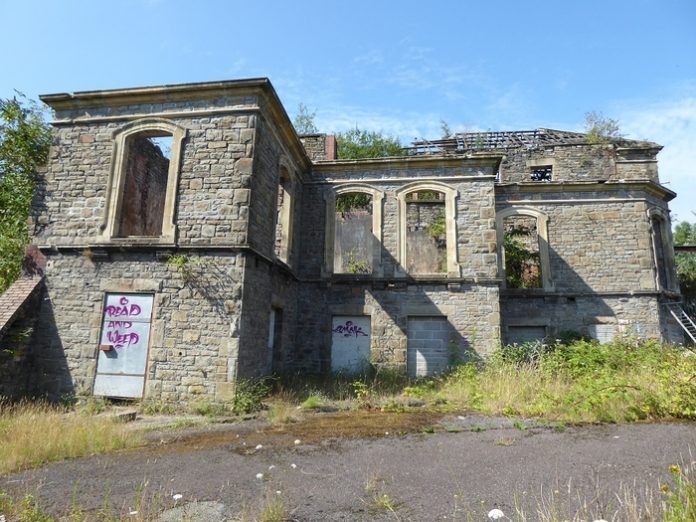Swansea Council is working to save an important former industrial building for future generations.
The historic Laboratory Building on the Hafod-Morfa Copperworks site could become a restaurant if new plans are approved and funding secured to repair the dilapidated structure.
A planning application has been submitted. If approved – and funding is sourced to facilitate the renovation with an estimated investment of £2.5m – the new facility would stand next to a Penderyn Distillery attraction being developed now.
Robert Francis-Davies, the council’s cabinet member for investment, regeneration and tourism, said: “The copperworks site is a major part of Swansea’s heritage and an important element in the city’s £1bn regeneration story. We see it becoming a major leisure destination.
“Work is already progressing on the site’s Penderyn project and we’ve worked hard to save two nearby historic engine houses for future use.
“We now want to save the grade two listed Laboratory Building and bring it back into use.”
This planning application is the first step in that process. It sees the council propose how it can the repair and enhancement of the building’s existing fabric and a full repair and refurbishment of the exterior and key internal elements. This will allow for future redevelopment, potentially as a restaurant.
The Laboratory Building dates from the second half of the 1800s. It was probably used to test the quality of copper ore coming into the works that helped put Swansea on the world’s industrial map.
It is architecturally the most ornate of all the surviving buildings on the copperworks site, with many classical features. However, it is derelict, having lost much of its roof, and is unsafe.
The two- and three-storey structure, with ornate windows and a fine stone doorcase, stands next to the Morfa Gates, once a key copperworks entrance.
Phase one of the repair project would include work to make the building safe and to avoid the risk of collapse. This involves the provision of new restraints to support existing walls and roof beams that are at risk of collapse.
Phase two would involve the refurbishment of the existing building, making it watertight and usable. This would include a new Welsh slate roof, new external doors and windows and level access to the building making it accessible to all.
As a restaurant it could seat more than 100 diners.
The design proposal was drawn up with finding support from the Welsh Government. The council engaged GWP Architecture to undertake the work.
GWP Architecture are already working on several other live heritage design schemes in South Wales, including the breathing of new life into Swansea’s Palace Theatre building.
The planning application will be considered by a planning committee in the coming weeks. If approval is granted, funding found and the work carried out the council would then seek investment to see the building developed as a café-restaurant.



















